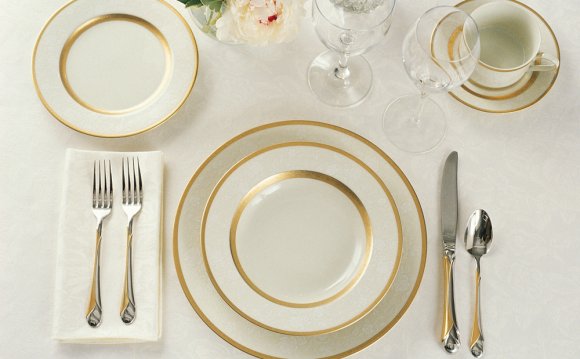
Traditionally, the five-piece place setting includes a dinner plate, salad/dessert plate, bread-and-butter plate, cup and saucer. Some of today`s newest additions and alternatives include the oversized plate (alias chop plate, buffet plate, service plate, liner plate or charger) measuring 12 inches in diameter and usually placed under the dinner plate as decoration;
the formal mug designed to replace the cup and saucer and offered to coordinate with even the haughtiest of porcelains; and an assortment of bowls. that range from a wide-mouthed soup plate to a small fruit bowl.
The following definitions of types and grades of dinnerware are taken from Ceralene-Raynaud`s consumer brochure ``Maximize the Minimums.``
Bone china: China that contains animal bone ash for added translucency and whiteness.
China: A nonporous clayware made of special white clay and fired at exceptionally high temperatures. The finer grades are generally thin, translucent, resistant to chipping and ring clearly when struck.
Earthenware: A type of clayware fired at comparatively low temperatures, producing a heavy, porous body that is opaque and generally not as strong as china.
Faience: Originally a type of French-made pottery, the term is used today to refer to a fine glazed earthenware.
Ironstone: A term applied to certain types of earthenware. Originally, it was a form of stoneware said to contain powdered iron slag.
Ovenware: Clayware that is able to withstand the heat of a kitchen oven without damage. This permits food to be cooked and served in it.
Porcelain: A hard, white, nonporous clayware body made with feldspath that contains no bone ash. Generally, the terms ``china`` and ``porcelain``
are interchangeable.
Pottery: A porous and not very durable form of clayware made of crude clay and fired at comparatively low temperatures.









